Хаас за Япония
Ромен Грожан:
You’ve been quoted as saying that Suzuka is your most favorite track in the world. Why?
It’s always difficult to say exactly why. I think it’s the flow, the corners, the high-speed nature of the track. There’s a risk, as well, with all the gravel and the narrow parts of the circuit. Overall though, it’s not one thing, and sometimes you don’t know why you like something, you just do.
You led 26 laps in the 2013 Japanese Grand Prix at Suzuka before finishing third. That is the most laps you’ve led at any Formula One venue. Talk about that race and how you were able to run out front for so long.
I was fourth on the grid and made a really good start. I led from the first corner. Then Red Bull played its strategy. They put one car on a two-stop (strategy) and the other on a three-stop strategy. We led 26 laps, but we lost position to them. It was great, though. I remember telling myself to not go out as all the world’s TVs were on me. It was a great feeling to be leading. I loved it. I remember going to the train station after the race and it was packed with all the fans. It was hectic, but memorable.
There seems to be a delicate balance at Suzuka in regard to downforce. Too much and you go slowly down the straights. Too little and you won’t have the confidence to attack the track’s twists and turns. Obviously, the level of downforce is predicated on how comfortable you are at speed. How do you achieve this balance?
It’s one of those tracks where you need quite a lot of downforce and a really good car in the high-speed corners. There are some important low-speed ones, as well. It’s about getting the right confidence in being able to push to the limit in those tricky sector-one turns. It’s not an easy track to set up the car, but definitely a really good one to be on.
Understeer through the esses between turns three and seven is often at the top of the to-do list at Suzuka. How do you address understeer and at what point does a change to help the car in one section of the track hurt it in another section?
It’s a fine line. If you start getting understeer too early, you’re out of the phase quite early onto turns three, four, five, six, seven and eight. If you start with oversteer, it’s bad as well. There’s a fine line in having the right balance there, and to not be too far off what you should have in the low-speed corners as well.
Would you call Suzuka a driver’s track?
Definitely.
Can the driver make more of a difference at Suzuka than at some other tracks?
Not really, unfortunately. It’s about finding the right balance with the car. Your car’s performance dictates your performance at the end. It’s more or less the same everywhere. You can try to drive around and be quite consistent more easily than at other tracks.
Where are the overtaking opportunities at Suzuka?
Definitely at turn one with the DRS. There’s also big braking at the chicane at the last corner. There’s the middle hairpin too where you can have a go on the braking.
What is your favorite part about Suzuka?
Very difficult to pick just one, but I’ll go for sector one.
Describe a lap around Suzuka.
Turns one and two are very high-speed on entry. They’re long corners with a tricky exit. Sector one has a flow of corners where you really want to keep the perfect line all the way through, with the tricky one being turn seven and eight going up the hill on traction. Then you have a double right-hand corner, very high-speed one, very tricky exit curb in between. Then you go underneath the bridge with big braking into the hairpin. Traction is always important in going to Spoon corners. Same stuff here as turn one – very high-speed entry, going down to the second part with a very important exit which then leads to the big backstraight. Then it’s 130R flat out followed by big braking for the last chicane with a very tricky throttle application.
Beyond the racetrack, what is most often talked about at Suzuka is the passion its fans have. Can you describe the atmosphere at the track and the fervency Japanese fans have for Formula One?
It’s a pretty crazy atmosphere from Thursday onward. All the grandstands are full. After the race, they’re still there watching the replays of the grand prix on the big screens. They always have really cool fashions on display, with some crazy accessories. They love Formula One and they’re very passionate. It’s a very electric atmosphere. It’s great to see that passion and so many people cheering for teams like us.
Japan has some fantastic and unique cuisine. What is your favorite?
When we speak about Japan, everyone brings up sushi first. There’s much more to the country than just that. There’s some great meat, great fish. The techniques there are very different than French gastronomy. It’s very delicate. I love it.
When you leave Japan you’ll be gearing up for Haas F1 Team’s home race – the United States Grand Prix in Austin, Texas. Where do you want Haas F1 Team to be heading into that event?
Ideally, we’d like to be able to fight for the win at our home race, but obviously that’s a bit optimistic. I think we’ll take it step-by-step. Let’s hope we have a good Japanese Grand Prix. Then we’ll go to Texas and push really hard, as we always do, to make our fans proud. Hopefully, we can make them, and our special guests at the event, really happy, as well as ourselves.
Кевин Магнусен: Many drivers claim Suzuka as their favorite track in Formula One. Are you one of them?
I’m definitely one of them. It’s just a great circuit. It’s extremely fast, and you have the section in sector one with all the esses – that feels amazing going through there in a Formula One car. You have the fastest corner in the world, as well in 130R.
Would you call Suzuka a driver’s track?
Absolutely. It’s a real driver’s track with high-speed corners where you need to really push the car.
Can the driver make more of a difference at Suzuka than at some other tracks?
I mean, a little bit more, but Formula One doesn’t work like that anymore. We’re all going pretty much to the limit of the cars.
Where are the overtaking opportunities at Suzuka?
It’s not the easiest track to overtake. I guess turn one is a good one – probably the best one.
What is your favorite part about Suzuka?
Probably the first sector.
Describe a lap around Suzuka.
It’s twisty and quite tight and fast.
Beyond the racetrack, what is most often talked about at Suzuka is the passion its fans have. Can you describe the atmosphere at the track and the fervency Japanese fans have for Formula One?
It’s a great atmosphere there. The Japanese fans are amazing. They really get into it.
Japan has some fantastic and unique cuisine. What is your favorite?
I love sushi.
When you leave Japan you’ll be gearing up for Haas F1 Team’s home race – the United States Grand Prix in Austin, Texas. Where do you want Haas F1 Team to be heading into that event?
I would love to be right in front. We’re going to do our best to give our American fans the best result possible.
Гюнтер Щайнер: The midfield has been tight all year and it seems even tighter as we come into the homestretch of the season. Is seventh in the constructors standings – one spot better than your positon last year – an attainable goal?
For sure, we try to finish seventh. I think at this moment in time we would be happy with that. We stopped developing the ‘17 car quite a while ago to concentrate on next year’s car. We need to focus and stay stable year-to-year, not just one year up and down because then you create a wave effect and you never geta grip of what you’re doing. We try to do our best. We will bring a few more developments, but they are small. The last one comes in Austin. Hopefully, we can score some points. I hope also that our worst circuits are behind us, like the slow-speed, high-downforce ones. Our car doesn’t like them. It’s tough in the midfield.
High-speed stability in regard to mechanical stiffness and aerodynamic balance seem to be the key to success at Suzuka. What do you do to achieve that?
You can’t do a lot more than what your car has already, and we are pretty confident that what we’ve got is working well. We just need to find a balance for the weekend. Japan is high speed and there are some challenging corners, but it’s a nice place to be and I hope we can find a good setup and show what we can do.
There seems to be a delicate balance at Suzuka in regard to downforce. Too much and you go slowly down the straights. Too little and the driver won’t have the confidence to attack the track’s twists and turns. Obviously, the level of downforce is predicated on how comfortable the driver is at speed. How do you find this balance between the needs of the car and the needs of the driver?
It’s one of those things that go hand-in-hand. Once you find the quickest way around the track by balancing top-end speed versus downforce, the driver is quite happy because he wants to be quickest around the track. For them, the happiest is when they get a good lap time.
Understeer through the esses between turns three and seven is often at the top of the to-do list at Suzuka. How do you address understeer and at what point does a change to help the car in one section of the track hurt it in another section?
It’s mainly about how your car is set up from the beginning. You can always get a little understeer, but then you introduce oversteer into the other parts of the track. We will see how we end up.
With all the investment that goes on in Formula One, is the investment a team has made in its driver lineup perhaps best on display at Suzuka?
Absolutely. You need to be a brave man around Suzuka. You’re at high speed and when you go off, sometimes it’s not a soft landing. You need to be brave, but you also need to be very technical to set the car up. Suzuka is definitely a track that tests driver skill.
Beyond the racetrack, what is most often talked about at Suzuka is the passion its fans have. Can you describe the atmosphere at the track and the fervency Japanese fans have for Formula One?
I think it’s very special. If you are a fan at Suzuka, you are a diehard fan. They will be lining up outside. It’s quite amazing how much they love it. I think a lot of people look forward to it because it’s so different from anywhere else.
Japan has some fantastic and unique cuisine. What is your favorite?
Any sushi or sashimi. I look forward to it.
When you leave Japan you’ll be gearing up for your home race – the United States Grand Prix in Austin, Texas. Where do you want Haas F1 Team to be at that time and what will your thoughts be on that long flight back to North Carolina?
I think the biggest thing is just to not make mistakes. We want to show off the car as much as possible to all the American fans and give them a good show.


















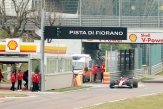
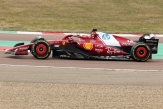
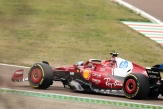
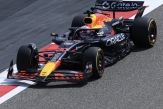
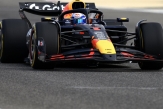


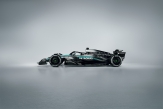
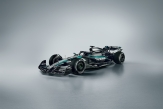
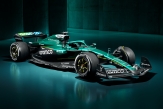
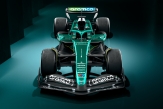
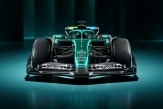
.jpg)
.jpg)
.jpg)

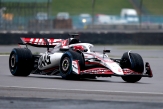

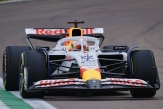
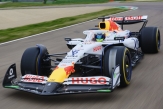



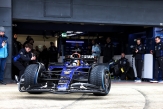
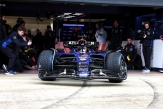
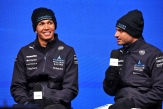

02/12/2025 от Огнян Тенчев (drJeckyll), няма коментари